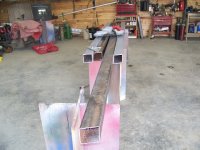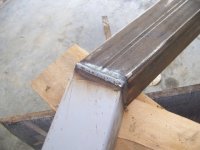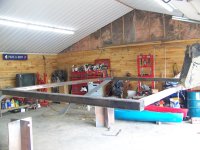RichNJKubota said:
I chose the glass tubes because, after talking to several installers and homeowners, they worked better than the flat panel collectors.
I found many people who disliked the glass tubes also. It seemed like it was allot like the regular oil vs. synthetic "debate".
In the end I chose the glass tubes but my neighbor has a flat panel system that's still working from the 70's.
The thing that amazes me is the glass tube collectors will even make hot water on a cloudy day.
That is the beauty of the evacuated glass tubes, they will heat water, only slower, on a cloudy day. Because of the convection and conduction thermal losses with an air filled panel, it produces very little heat on a cloudy day. The collector in a vacume has none of these losses, only radiation losses, and if you are continually pulling heat out of the inner conductor into the water system, the radiation losses will are minimal.
The biggest advantage of radiant heat is that it slows the vertical heat transfer. radiant heat does not heat as much air. Baseboard and central air heating heat air and try and fill the room with this warm air for comfort. Because of the small surface area of the radiator surface around the tube, they need that higher boiler temp to heat air at a reasonable rate. They have all those fins to help enhance that process but they have to move a lot of air thru the fins to be effective. Because of density, that heated air from this or central air furnaces rises and transfers it's heat to the walls and ceiling, which conduct it away to the outside. That is why the attic insulation makes such a big difference.
Radiant heating is like walking past a brick wall that has been in the afternoon sun, just after the sun goes down. You can feel the heat against your skin. How is the heat getting to you? Thru direct radiation... It is heating air also, which is immediatly rising, but because of laminar flow, it is not heating very much air, just a thin layer along the surface. The air closest to the wall absorbs heat, but it then acts like water in a wetsuit as it travels up the wall and provides insulation.
This is a problem in heat exchangers and air heating elements that engineers work hard to overcome by designing in turbulators to mix up the fluid and break up laminar flow. With turbulence, more fluid is exposed to the hot surface and more heat is transfered faster at lower temp differences. A warm floor will warm the air in contact with it, but this is a far slower process than a baseboard heater as the flooring or carpet is not a good heat transfer medium. It is also heating the coldest air in the room. If the floor is warm it will radiate heat like the brick wall, and objects or people in the room will absorb this radiation and be warmed. That sun warmed wall I described earlier is probably only around 100F-105F, but your exposed skin can sense the heat for several feet. If it is a cool calm evening without a breeze to chill your skin, you can feel the heat for quite a distance.













